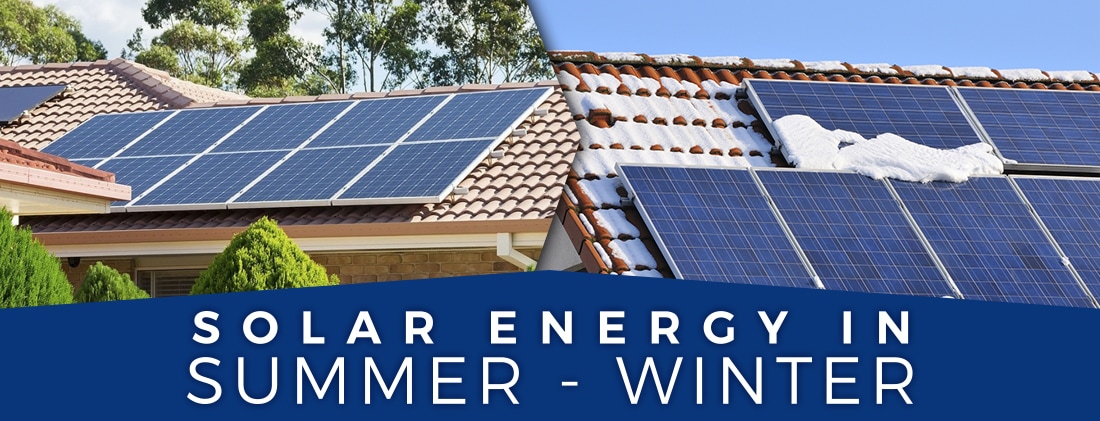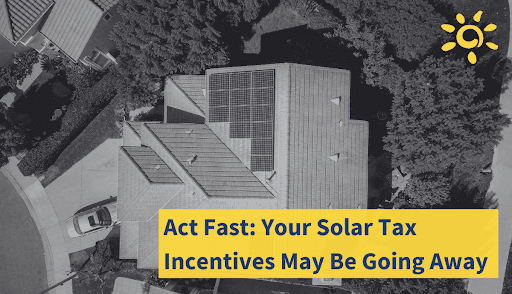Or is it just a myth? Winter is often panned as the least solar friendly time of the year. After all, if it is cold and cloudy outside, then clearly solar panels will have less to work off of, right? While seemingly a natural conclusion, it’s not that simple.
Solar Thermal Vs Solar Photovoltaic
Solar power comes in two flavors – thermal and photovoltaic. Thermal solar power systems work by turning heat from the sun into usable power, typically by heating water thru a heat exchanger. Photovoltaic systems, on the other hand, rely entirely on light from the sun to create electricity. Contrary to popular belief, photovoltaic solar panels do not need the full gamut of solar radiation (including heat) in order to work — just sunlight is enough.
But Isn’t there Less Ambient Light During Winter?
Say winter and the first thing that comes to anyone’s mind is dark gloomy skies. But little did you know – solar panels actually prefer that! While heat itself doesn’t contribute to electricity production in photovoltaic cells, solar panel efficiency is hugely affected by ambient air temperature.
Most power efficiency figures you see on the web are usually given via testing done at 77 degrees Fahrenheit. A rise in temperature can adversely affect solar panel performance. A field experiment in the UK found that photovoltaic efficiency dropped by 1.1% for every rise in one degree Celsius temperature once it has crossed 42 degrees.
On the other hand, a drop in temperature can give your solar panel a productive boost. Ideally, you want bright, sunny, yet cold long days to get the most out of your panels. However, since that’s rarely the case, tradeoffs start to play an important role.
The earth tilts north and south slightly on its axis as it goes around the sun. This phenomenon is primarily responsible for our seasons. In summers, solar panels receive more sunlight as the northern hemisphere is tilted towards the sun, which causes the days to be longer as the sunlight hits the surface more directly. Conversely, in winters the southern hemisphere comes into the sun’s focus causing the days to get shorter in the north and the light is also more diffused.
So, while the duration of access to sunlight is greater in summers, the operating temperature is ideal in winters. When the drop in efficiency caused by an increase in temperature during summers is accounted for, the net output ends up being pretty much the same.
Even so, ambient light isn’t all that bad in winters. Solar panels in winters can benefit from the albedo effect which causes more light to be reflected from stuff that’s colored white, such as snow.
That being said, winter days are rarely clear skied. Top that off with a healthy dose of snow on top of your solar panels and their efficiency is bound to drop. However, the good news is that for the most part, snow isn’t as big a problem as it’s made out to be. Snow can easily be cleaned from solar panels and if they are installed on an angle, any accumulation can slide off on its own.
Depending on where you live, certain types of solar cells may be a better fit than others as well. For instance, thin film solar panels can greatly outperform traditional crystalline silicon cells for hot weather. Amorphous silicon (shortened to a-Si) cells experiences a 2% drop in efficiency over 100 degrees Fahrenheit. So, if you live in an area where the temperature climbs above 77 degrees, a-Si solar panels can be a better choice.
This is only one of many choices that need to be made when going solar and if you’re interested feel free to give us a call.
Why Occasional Drops in Production Do Not Matter
Obviously, you will see some deviation in the amount of power your solar panels will produce as you move through the year. But let’s say you live in an area that’s far cloudier in winters. Your solar panel efficiency is bound to drop which may cause you to wonder if it will be worth it for half a year.
Fear not though as after going solar, your billing cycle will see a massive change. Solar homeowners receive two statements – a monthly statement which shows the balance left for the month and an annual “true-up” statement that reads out your net energy usage for the previous year.
Many homeowners are pleasantly surprised when they find that their meter starts running both forward and backwards when they go solar. This is primarily due to Net Energy Metering (NEM) made possible by the fact that homeowners (being energy consumers now) can sell their excess energy to the grid.
Now, provided your area received far more sunlight during the summer months, your solar panels will produce excess energy relative to winter which can be sold to the grid. Therefore, when you do get your bill, it will be adjusted for the energy you have sold which usually covers any lapses you may experience during the winter months adequately. In other words, it’s a win-win scenario.
(Also, check out our article on how to save electricity in winter if you’re interested in some neat tips!)
So, When Should You Get Solar?
Winter may be the last time you’d think of going solar, however, as explained above, there is no real difference and whatever it may be is quickly offset via the NEM. Since, whether your home is primed for a new solar power system or you should wait depends entirely on where you live, getting a free consultation is the best way to know what you can expect.
In any case, it can take up to 2-3 months for a solar power system to be designed and installed on your home so, the quicker you start, the faster you can start enjoying those solar credits. Not to mention, the solar industry sees a massive rush in spring through summer, so, starting now will help you beat the crowd, too.
Interested? We’ll love to help! Give us a call at 805-772-6786 or ask for a free consultation and we’ll get back to you in no time.


